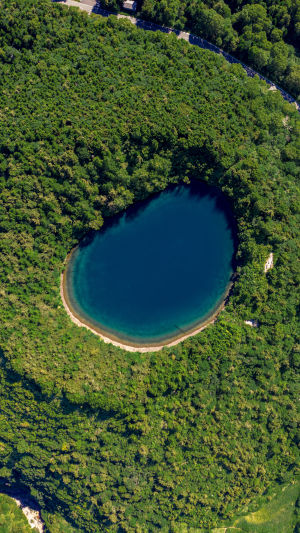Dear adrenaline-seekers, diving is really an exhilarating adventure, but some underwater locations are as deadly as they are beautiful.
For thrill-seekers and experienced divers looking for a challenge, here are the top four most dangerous diving sites in the world. Remember, safety first—these sites are not for the faint-hearted!
<h3>1. Cenotes Candelaria, Campeche, Mexico</h3>
Cenotes Candelaria offers an extraordinary diving experience, blending adventure with the mystical allure of the Mayan underworld. Located deep within the jungle, these cenotes are part of an extensive cave system that remains largely unexplored. Divers are drawn to the crystal-clear waters, intricate rock formations, and the eerie, yet captivating, play of light as it filters through the narrow openings.
The cenotes' depths, combined with tight passageways, make it a challenging dive, recommended only for those with advanced cave diving skills. Despite the risks, the stunning underground landscapes and the chance to explore a hidden world beneath the surface make Cenotes Candelaria an unforgettable destination.
To get there, fly into Campeche International Airport, and from there, it's a 3-4 hour drive through lush jungle terrain to reach the site. Local dive operators in Campeche offer guided tours to this remote and fascinating location.
<h3>2. The Blue Hole, Dahab, Egypt</h3>
The Blue Hole is notorious for its deadly allure. This deep, blue abyss reaches over 300 feet and features an underwater tunnel known as "The Arch," which has claimed the lives of many divers. The combination of its depth and deceptive underwater visibility makes it incredibly challenging. Despite its danger, the Blue Hole is stunning, with vibrant coral and a variety of marine life. The thrill of diving into its depths and the eerie beauty of The Arch attract experienced divers from around the world.
To reach the starting point, fly into Sharm El-Sheikh International Airport, from there, it's a 1-2 hour drive to Dahab. Many dive centers offer transportation from Sharm El-Sheikh to Dahab.
Diving the Blue Hole, Dahab, Egypt
Video by Igor Travels The World
<h3>3. Cenote Esqueleto (The Temple of Doom), Tulum, Mexico</h3>
Cenote Esqueleto, also known as the Temple of Doom, is a maze of underwater passages that can disorient even the most experienced divers. The lack of light and complex cave systems pose significant risks. This cenote offers a thrilling dive with unique limestone formations and stunning stalactites. The water is crystal clear, creating an otherworldly atmosphere.
Fly into Cancun International Airport, then drive about 1.5-2 hours south to Tulum to get your adventure started. Also, in this case, dive centers in Tulum can provide transportation to the cenote.
<h3>4. The Shaft Sinkhole, Mount Gambier, Australia</h3>
The Shaft Sinkhole is one of the most challenging cave dives in the world. It involves descending through a narrow shaft before reaching the expansive underwater cave system. The tight entrance and labyrinthine passages can easily lead to entrapment. Once inside, you'll be rewarded with breathtaking rock formations and the serenity of one of the world's most remote diving spots.
Everything starts in South Australia. Fly into Adelaide Airport, then it's a 4-5 hour drive southeast to Mount Gambier, alternatively, you can fly into Mount Gambier Airport via a connecting flight from Adelaide or Melbourne.
<h3>Safety Tips:</h3>
- Ensure you have extensive cave diving experience.
- Use appropriate equipment, including multiple light sources.
- Use a guideline to navigate through the caves.
- Maintain constant communication with your dive partner.
Although all of these caves prospect an ethereal adventure, diving requires advanced skills, preparation, and respect for the risks involved. Always prioritize safety and never dive beyond your limits. These incredible locations offer unforgettable experiences, but they demand the utmost caution and expertise.
Dive safely and enjoy, bye brave Lykkers!





